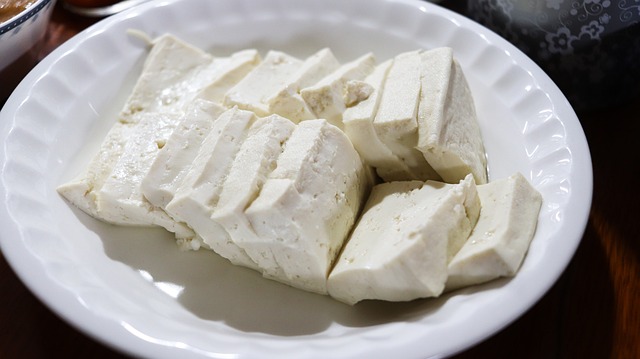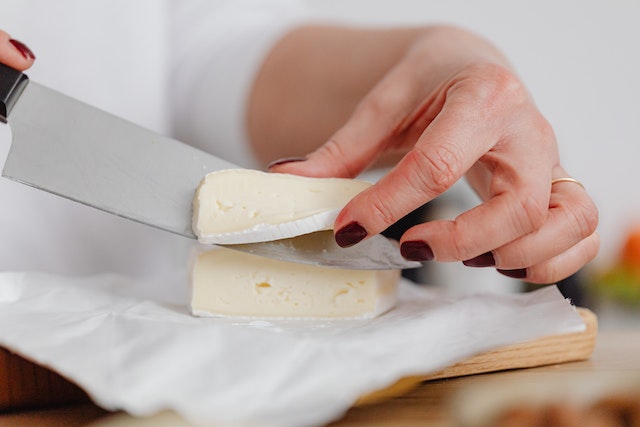
In today’s ever-evolving culinary landscape, dietary preferences and health-conscious choices have paved the way for a rise in innovative alternatives. Among these, alternatives to dairy products have emerged as a promising option for those seeking to explore plant-based milk options. With a myriad of flavors and textures to choose from, these captivating alternatives have captivated the taste buds of both vegans and lactose-intolerant individuals, as well as those simply looking to diversify their culinary experiences.
Harnessing the power of nuts, legumes, and grains, dairy alternatives offer not only a sustainable option, but also exquisite taste profiles. Whether it be the creaminess of almond milk, the subtle sweetness of oat milk, or the rich undertones of cashew milk, one can easily find a substitute that seamlessly merges with their unique culinary preferences.
Types of Dairy Alternatives
Dairy alternatives have witnessed a surge in popularity due to dietary preferences, health considerations, and the growing demand for plant-based options. As a result, a wide variety of dairy alternatives have emerged, offering alternatives to traditional dairy products.
Plant-Based Milk Alternatives
- Almond Milk: Made from ground almonds blended with water, almond milk has a mild, slightly nutty flavor. It is versatile and can be used in both sweet and savory dishes, as well as coffee and cereal.
- Soy Milk: Soy milk is derived from whole soybeans and has a neutral flavor. It is a well-balanced milk alternative and can be used in cooking, baking, and as a direct substitute for cow’s milk.
- Oat Milk: Oat milk is made from soaked and blended oats. It has a creamy texture and a slightly sweet taste. Oat milk is excellent for coffee, smoothies, and creamy sauces.
- Coconut Milk: Coconut milk is extracted from grated coconut flesh. It has a rich, tropical flavor and is often used in curries, soups, and desserts. It’s available in both canned and carton varieties, with different fat levels.
- Rice Milk: Rice milk is made from milled rice and water. It has a mild and sweet flavor, making it suitable for cereals, drinking, and light cooking applications.
Non-Dairy Butter and Margarine
Vegan Butter: Non-dairy butter substitutes are typically plant-based and may include ingredients like coconut oil, soybean oil, and cashews. These alternatives are used for spreading, cooking, and baking. Some even mimic the taste and texture of traditional butter.
Dairy-Free Margarine: Margarine is often made from vegetable oils and emulsifiers. Dairy-free margarine can be used as a spread or for cooking and baking. Some varieties may contain no trans fats or hydrogenated oils.

Dairy-Free Cheese and Cream
Vegan Cheese: Dairy-free cheese alternatives are typically made from nuts, soy, or tapioca. They come in various flavors and textures, including slices, shreds, and spreads. Vegan cheese is used for pizzas, sandwiches, and salads.
Non-Dairy Cream: Non-dairy cream, like coconut cream, almond cream, or oat cream, is used in place of traditional cream in both sweet and savory dishes. It adds creaminess to soups, sauces, and desserts without dairy.
Egg Substitutes
- Flaxseed and Chia Seed: Ground flaxseeds or chia seeds mixed with water create a gel-like substance that can be used as an egg substitute in baking. This works well in recipes like muffins, pancakes, and quick breads.
- Applesauce: Unsweetened applesauce can replace eggs in recipes for moisture and binding. It’s commonly used in muffins, cakes, and brownies.
- Commercial Egg Replacers: Several commercial egg replacers are available, which are often starch-based. These can be used in a variety of recipes to achieve the desired texture and binding effect.
- Silken Tofu: Blended silken tofu can be used to add moisture and structure in recipes like vegan cheesecakes and frittatas.
The variety of dairy alternatives available today allows for diverse culinary experiences. Home cooks and chefs can choose dairy alternatives based on dietary needs and taste preferences, and adapt recipes accordingly.

Cooking and Baking with Plant-Based Milk
Plant-based milk alternatives have become a staple in modern cooking and baking, providing versatility for those seeking dairy-free or vegan options. These milk alternatives offer unique flavors and textures that can enhance a wide range of recipes. In this section, we’ll explore how to effectively use plant-based milk in cooking and baking.
When using plant-based milk as a substitute for dairy milk, it’s essential to choose the most suitable alternative for your recipe. Consider the flavor, texture, and fat content to ensure it complements the dish. Here are some general guidelines:
- Unsweetened plant-based milks are ideal for most recipes since they won’t introduce unwanted sweetness. However, sweetened varieties can be used in desserts when a touch of sweetness is desired.
- Almond, soy, and other nut or seed-based milks can be used interchangeably in many recipes. However, keep in mind that they might impart a subtle nutty flavor.
- Oat milk’s creamy texture makes it an excellent choice for creamy soups, sauces, and desserts. Its neutral flavor complements both sweet and savory dishes.
- Coconut milk is a rich and aromatic choice, often used in curries, rice dishes, and tropical desserts. It adds a distinctive tropical flavor to recipes.
- Rice milk is suitable for recipes where a mild, slightly sweet flavor won’t overpower the dish. It’s an excellent choice for baking and cereals.
The Impact of Flavor and Texture in Recipes
Plant-based milk alternatives can influence the flavor and texture of your dishes. Nut or seed-based milks like almond or cashew can introduce nutty undertones to your recipes, which may be desirable in some baked goods. Rice milk, with its natural sweetness, can add a touch of sweetness to your recipes, making it perfect for desserts and breakfast dishes. Creamier plant-based milks like oat or coconut can yield a richer, creamier texture in soups, sauces, and creamy desserts.
Understanding the characteristics of different plant-based milk alternatives and how they interact with your recipes is key to successful cooking and baking. Experimentation and adaptation are encouraged to find the perfect plant-based milk for your specific culinary needs and preferences.

Dairy-Free Butter and Margarine
Dairy-free butter and margarine alternatives have gained popularity as more people seek dairy-free, vegan, and lactose-free options for cooking and baking. These substitutes offer versatility in the kitchen while ensuring that those with dietary restrictions or preferences can enjoy the rich flavors and textures traditionally associated with butter.
Non-dairy butter is a versatile substitute that behaves similarly to traditional butter in cooking and sautéing. Here’s how to effectively use non-dairy butter:
- Frying and Sautéing: Dairy-free butter alternatives can be used for frying, sautéing, and pan-searing, just like traditional butter. They provide the necessary fat to prevent sticking and enhance the flavor of savory dishes.
- Flavor Profile: Different dairy-free butters have varying flavors, which can range from neutral to nutty or even coconutty. Be mindful of the flavor profile of the non-dairy butter and choose the one that complements your recipe.
- Browning and Caramelization: Non-dairy butter can facilitate browning and caramelization in recipes, contributing to rich, deep flavors in dishes like sautéed vegetables and pan-fried proteins.
Baking with Dairy-Free Margarine
Non-dairy margarine is a popular choice for baking, offering a similar texture and functionality to traditional butter. When substituting non-dairy margarine for butter in baking, it’s generally a one-to-one ratio. However, follow recipe instructions to ensure the best results.
Dairy-free margarine can help maintain moisture in baked goods, resulting in tender and moist cakes, cookies, and pastries. Non-dairy margarine can have a mild to neutral flavor. If your recipe relies on the taste of butter, choose a non-dairy margarine with a minimal flavor profile or consider complementing it with other ingredients or flavors.
Dairy-free margarine is a crucial ingredient in vegan and lactose-free baking. It allows individuals with dietary restrictions to enjoy a wide range of baked goods without compromising on taste and texture.
Dairy-Free Cheese and Cream
The availability and quality of dairy-free cheese and cream alternatives have evolved significantly, providing options for those seeking dairy-free or vegan alternatives in their culinary creations. These dairy-free products offer an array of flavors and textures, making them versatile in both savory and sweet dishes.
Vegan Cheese
Dairy-free cheese comes in various forms, including slices, shreds, spreads, and blocks. These options offer the versatility to mimic the textures and flavors of traditional cheeses. Many dairy-free cheeses are made from nuts like almonds, cashews, or macadamias.
These nut-based cheeses often offer a rich, creamy texture and a variety of flavors, such as cheddar, mozzarella, and brie.
Soy-based cheeses are known for their meltability and are often used on pizzas, sandwiches, and in pasta dishes. They come in a range of flavors, including provolone, pepper jack, and more. Some dairy-free cheeses are made using tapioca and potato starch. These options provide a stretchy, gooey quality, making them ideal for dishes like grilled cheese sandwiches.

Incorporating Dairy-Free Cream
Dairy-free cream comes in several forms, including coconut cream, almond cream, and oat cream. These alternatives provide creaminess without dairy, and each has its own unique flavor profile. Dairy-free cream can be used in savory recipes to create rich and creamy sauces. It’s ideal for making vegan Alfredo sauces, creamy soups, and risottos. Coconut cream, in particular, adds a hint of coconut flavor to dishes.
Dairy-free cream can also be used in desserts to create creamy fillings for pies, tarts, and puddings. Almond and oat creams are popular choices for adding a mild, sweet creaminess to desserts. Some dairy-free creams can be whipped or frothed to create toppings for desserts and beverages. Coconut cream is often used for whipping, providing a luscious, dairy-free alternative to whipped cream.
Dairy-free cheese and cream options have expanded the culinary landscape for those with dietary restrictions or preferences. These alternatives enable the creation of indulgent and flavorful dishes without the use of traditional dairy products, allowing individuals to enjoy a wide range of recipes while adhering to their dietary choices.
Culinary Tips and Best Practices
When it comes to using dairy alternatives in your cooking and baking, there are several key tips and best practices to keep in mind. These guidelines will help you achieve the best results, whether you’re following a dairy-free diet or experimenting with alternative ingredients.
Adapting and Customizing Recipes for Dietary Needs
Read and Understand Labels: Always check the labels of dairy alternative products to ensure they meet your dietary needs. Look for certifications like “vegan” or “dairy-free.”
Substitution Ratios: Understand the substitution ratios for dairy alternatives. In most cases, you can replace dairy products with dairy-free alternatives at a 1:1 ratio. However, this may vary depending on the specific product and recipe, so refer to recipe instructions.
Dietary Preferences: Consider your dietary preferences and needs. For example, if you’re following a vegan diet, ensure that your dairy alternatives do not contain any animal-derived ingredients.
Balancing Flavors and Textures
Experiment with different dairy alternatives to find the best flavor combinations for your recipes. For instance, almond milk might work well in a nutty dessert, while oat milk complements a creamy soup.

Dairy-free alternatives can vary in terms of texture. If you need to adjust the consistency of your dish, consider using thicker or thinner alternatives based on your desired results. Be aware of the inherent sweetness of some dairy alternatives. Adjust your recipes accordingly, adding or reducing sugar to achieve the desired sweetness.
Addressing Common Challenges and Pitfalls
- Curdling: Some dairy alternatives may curdle when exposed to high heat or acidity. To prevent this, choose alternatives that are formulated to withstand such conditions or take steps like tempering.
- Overmixing: Overmixing can affect the texture of your baked goods. Use dairy alternatives with care and avoid overmixing to maintain the desired tenderness and crumb structure.
- Consistency Checks: Regularly check the consistency of your recipes as you substitute dairy alternatives. Adjust as needed to ensure your dish turns out as expected.
- Allergen Awareness: If you or your guests have food allergies, be aware of potential allergens in dairy alternatives. For example, almond milk can be a concern for nut allergies.
With these tips and best practices, you can confidently navigate the world of dairy alternatives in your culinary adventures. Whether you’re aiming to accommodate dietary needs, explore new flavors, or create plant-based delights, understanding how to work with dairy-free alternatives empowers you to enjoy a wide range of delicious and satisfying dishes.
